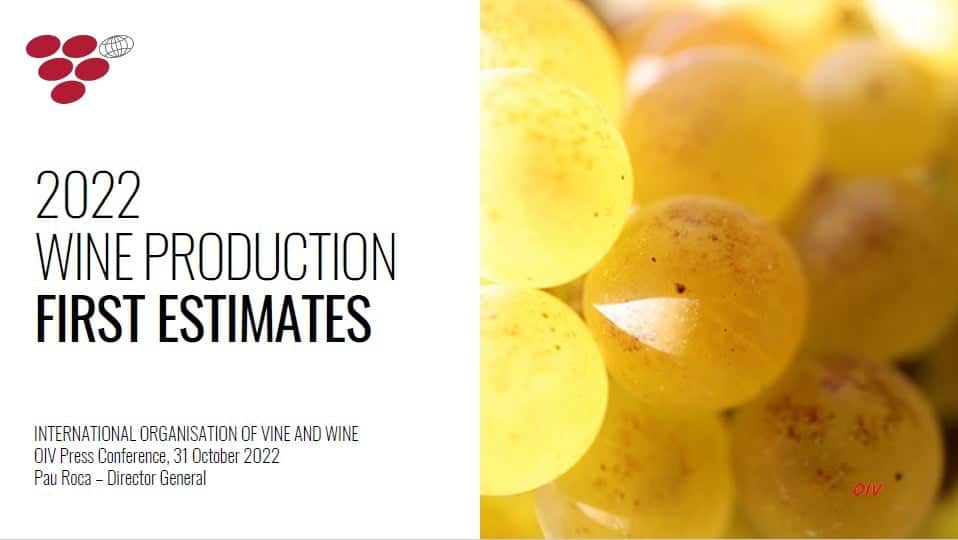Climate challenges have put the world of wine to the test
The extreme heat waves and the prolonged drought that led to exceeding the thresholds of resistance even for grapevines, affected more than two thirds of the viticulture of the European Union.
Meteorological anomalies are more and more frequent and tend to become the new normal. The wine sector must adapt, encourage sustainability policies both in vineyards and in wineries.
The increased prices of electricity, the shortage of bottles, the decrease in purchasing power in disfavor of wine, all these lead to emergency measures, which must become permanent.
In the northern hemisphere
In the European Union (EU), wine production in 2022 is expected to be 157 million hectoliters, registering an annual increase of 3.5 million hectoliters (+2%) compared to 2021.
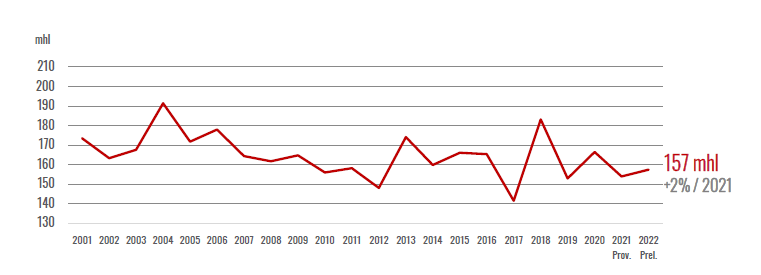
The positive performances in Italy, France and Germany compensated for the low harvests in Spain, Portugal and Greece, which were affected during the growing season by drought and heat waves not seen in more than 500 years.
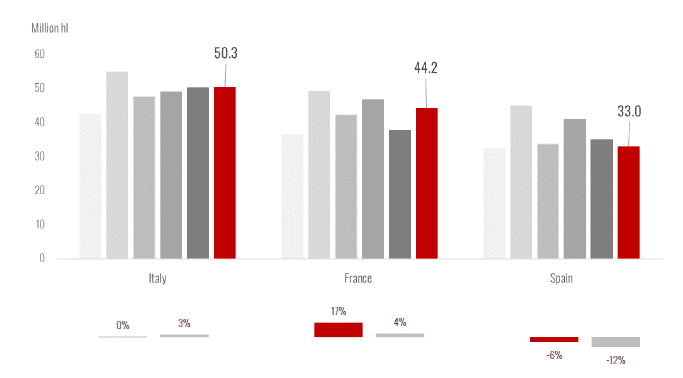
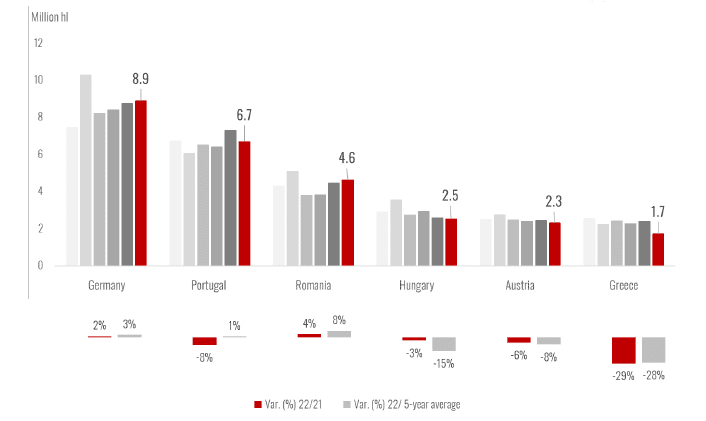
Romania maintains its 6th place in Europe, with the estimate of wine production for 2022, la 4.6 mil hl, with an increase of 4% compared to 2021 and 8% compared to the average of the last 5 years.
However, there is a tendency to correct the final data by 10%, in almost all EU countries, therefore, we have to see the figures in their dynamics.
In the southern hemisphere
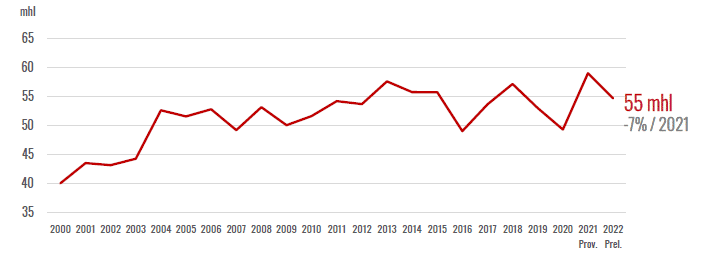
After a record level in 2021, vineyards in the southern hemisphere produced 55 million hectoliters in 2022, fully in line with the average of the last five years.
All major wine-producing countries recorded a decrease in production compared to 2021, with the exception of New Zealand.
Descending order of countries from the southern hemisphere, according to the estimated wine production: Chile (12.4 million hl), Australia (12.1 million hl), Argentina (11.4 million hl), South Africa (10.4 million hl ), New Zealand (3.8 million hl).
In 2022, wine production in the southern hemisphere is expected to represent 21% of the world total.
World wine production, estimated for 2022
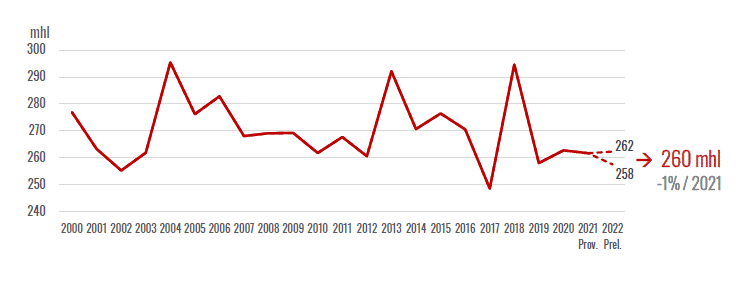
World wine production is expected to remain stable in 2022, at approximately 260 million hectoliters, despite drought and heat waves, which have been recorded in many regions of the world.
This will be the fourth consecutive year in which global production is expected to be slightly below the 20-year average.
Russia and China have not yet provided data until this press conference date.
The hope is in wine tourism
Along with the digitization of the wine sector, wine tourism represents an important tool that can transform the consequences of climate change into opportunities.
Wine-growing tourism brings travellers close to culture and territorial identity, and wine is a key component in increasing the motivation for travelling for wine tourism purposes.
Romania has an extraordinary potential for the development of wine tourism and is waiting to be discovered.
About OIV
The OIV is an intergovernmental organization of a scientific and technical nature of recognized competence for its work concerning vines, wine, wine-based beverages, table grapes, raisins and other vine-based products. It is composed of 48 Member States.
In the framework of its competence, the objectives of the OIV are as follows:
- to inform its members of measures whereby the concerns of producers, consumers and other players in the vine and wine products sector may be taken into consideration;
- to assist other international organizations, both intergovernmental and non-governmental, especially those that carry out standardization activities;
- to contribute to the international harmonization of existing practices and standards and, as necessary, to the preparation of new international standards in order to improve the conditions for producing and marketing vine and wine products, and to help ensure that the interests of consumers are taken into account.
Source: OIV, https://www.oiv.int/

